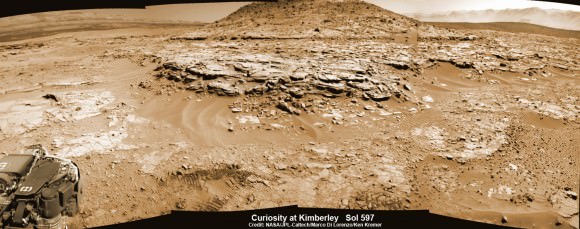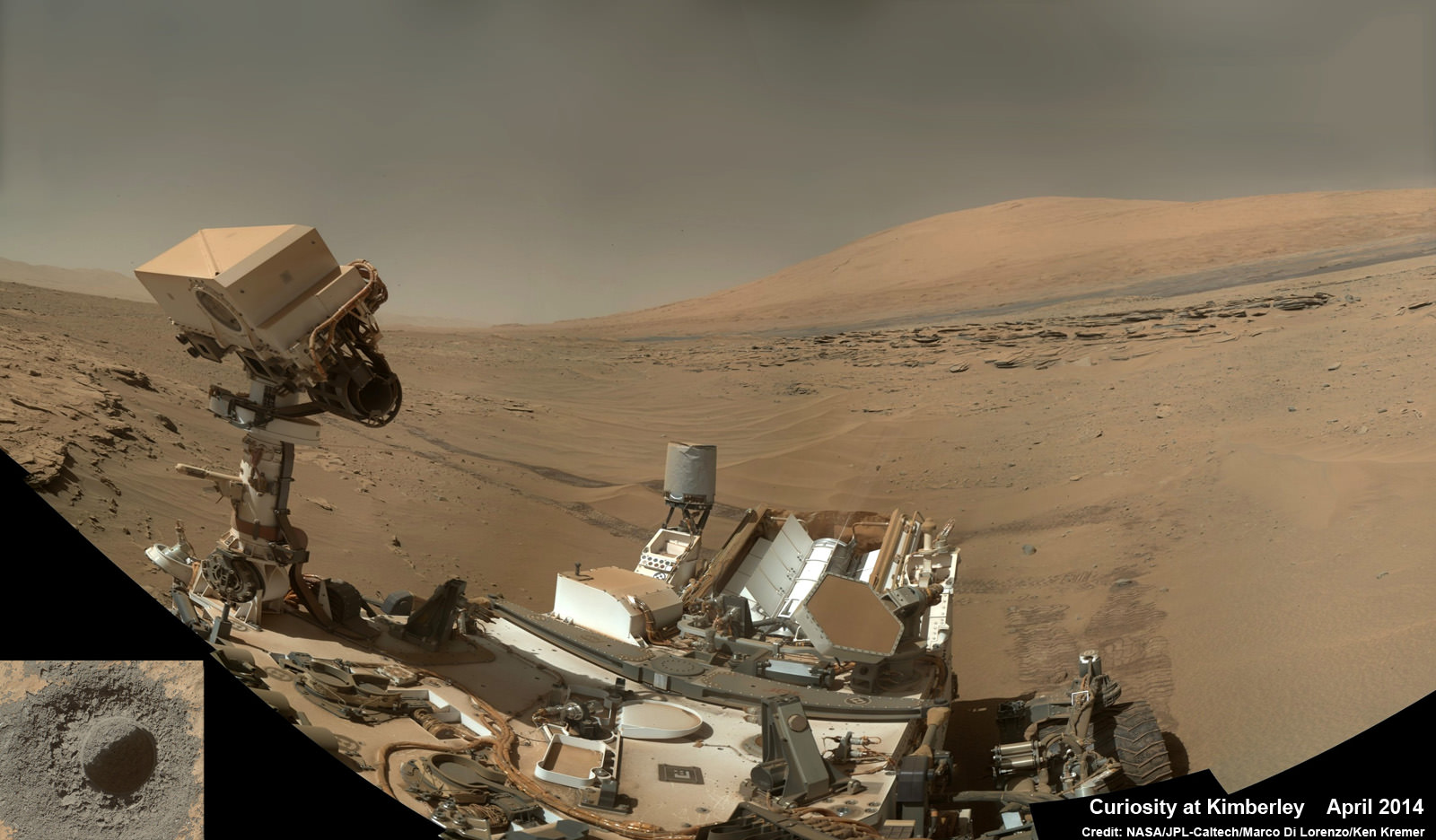Curiosity snaps selfie at Kimberley waypoint with towering Mount Sharp backdrop on April 27, 2014 (Sol 613). Inset shows MAHLI camera image of rovers mini-drill test operation on April 29, 2014 (Sol 615) into “Windjana” rock target at Mount Remarkable butte. MAHLI color photo mosaic assembled from raw images snapped on Sol 613, April 27, 2014. Credit: NASA/JPL/MSSS/Marco Di Lorenzo/Ken Kremer – kenkremer.com
See more Curiosity photo mosaics below[/caption]
Three days ago, the burning question was “To Drill or not to Drill?”
The answer has come Fast and Furious – “Drill, Baby, Drill !”
After spending the weekend inspecting an enticing slab of sandstone rock at “Kimberley”, the team directed NASA’s Curiosity rover to bore a test hole into a Martian rock target called “Windjana” on Tuesday, April 29, Sol 615, that exhibited interesting bumpy textures. See above our illustrative “Kimberley” photo mosaic.
“A decision about full drilling is planned in coming days,” NASA JPL press officer Guy Webster told me today.
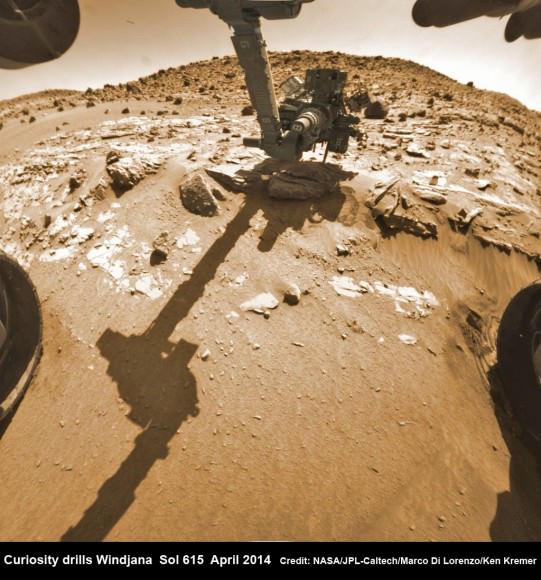
Engineers commanded Curiosity to perform the so called “mini-drill” operation at “Windjana”- as the site of the robots third drilling operation since touching down on the Red Planet back in August 2012.
The 1 ton robot drilled a test hole 0.63 inch (1.6 centimeters) in diameter and to a depth of about 0.8 inch (2 centimeters) using the hammering drill at the terminus of the robotic arm.
Windjana is an outcrop of sandstone located at the base of a Martian butte named Mount Remarkable at “The “Kimberley” waypoint – a science stopping point reached by the rover in early April 2014 along its epic trek to towering Mount Sharp, the primary destination of the mission.
See our photo mosaics illustrating Curiosity’s science activities and drilling operations on “Windjana” and roving around the “Mount Remarkable” butte at “The Kimberley Waypoint” – above and below – by the image processing team of Marco Di Lorenzo and Ken Kremer.
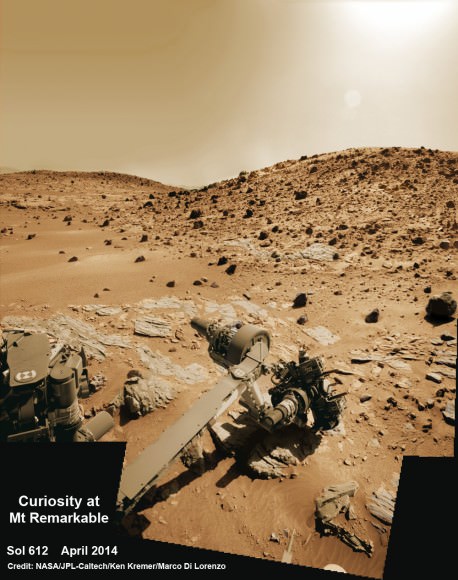
The team is evaluating the resulting hole and powdery, gray colored tailings with the arm’s high resolution MAHLI camera and other instruments to determine whether to follow up with a deep drilling operation to a depth of 2.5 inches (6.4 centimeters).
To prepare for the “mini drill” operation, Curiosity first brushed the candidate drill site off with the wire-bristle Dust Removal Tool (DRT) this past weekend, to clear away obscuring Red Planet dirt and dust hindering observations with the cameras and spectrometers.
“In the brushed spot, we can see that the rock is fine-grained, its true color is much grayer than the surface dust, and some portions of the rock are harder than others, creating the interesting bumpy textures,” said Curiosity science team member Melissa Rice of the California Institute of Technology, Pasadena., in a NASA statement
“All of these traits reinforce our interest in drilling here in order understand the chemistry of the fluids that bound these grains together to form the rock.”
“Windjana,” is named after a gorge in Western Australia.
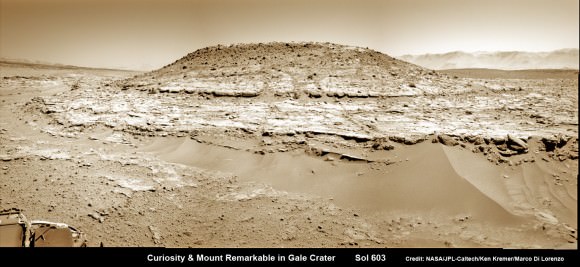
Why was Kimberley chosen as a science destination ?
“The Kimberley” has interesting, complex stratigraphy,” Curiosity Principal Investigator John Grotzinger, of the California Institute of Technology, Pasadena, told me.
If the team decides that Windjana meets the required criteria, Curiosity will bore a full depth hole into the sandstone rock, and then pulverize and filter it prior to delivery to the two onboard miniaturized chemistry labs – SAM and CheMin.
Windjana would be the first sandstone drill target, if selected. The first two drill locations at ‘John Klein’ and ‘Cumberland’ inside Yellowknife Bay were mudstone.
Curiosity departed the ancient lakebed at the Yellowknife Bay region in July 2013 where she discovered a habitable zone with the key chemical elements and a chemical energy source that could have supported microbial life billions of years ago – and thereby accomplished the primary goal of the mission.
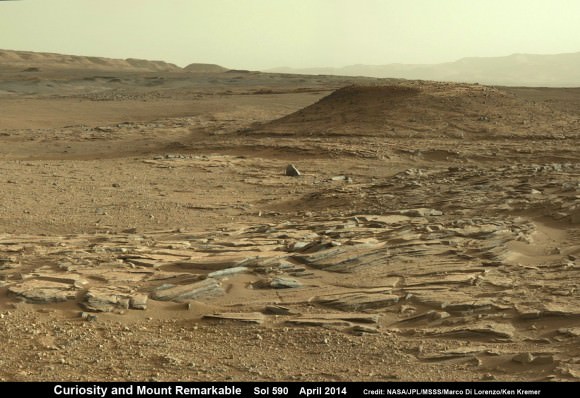
Stay tuned here for Ken’s continuing Curiosity, Opportunity, Chang’e-3, SpaceX, Orbital Sciences, LADEE, MAVEN, MOM, Mars and more planetary and human spaceflight news.
Ken Kremer
